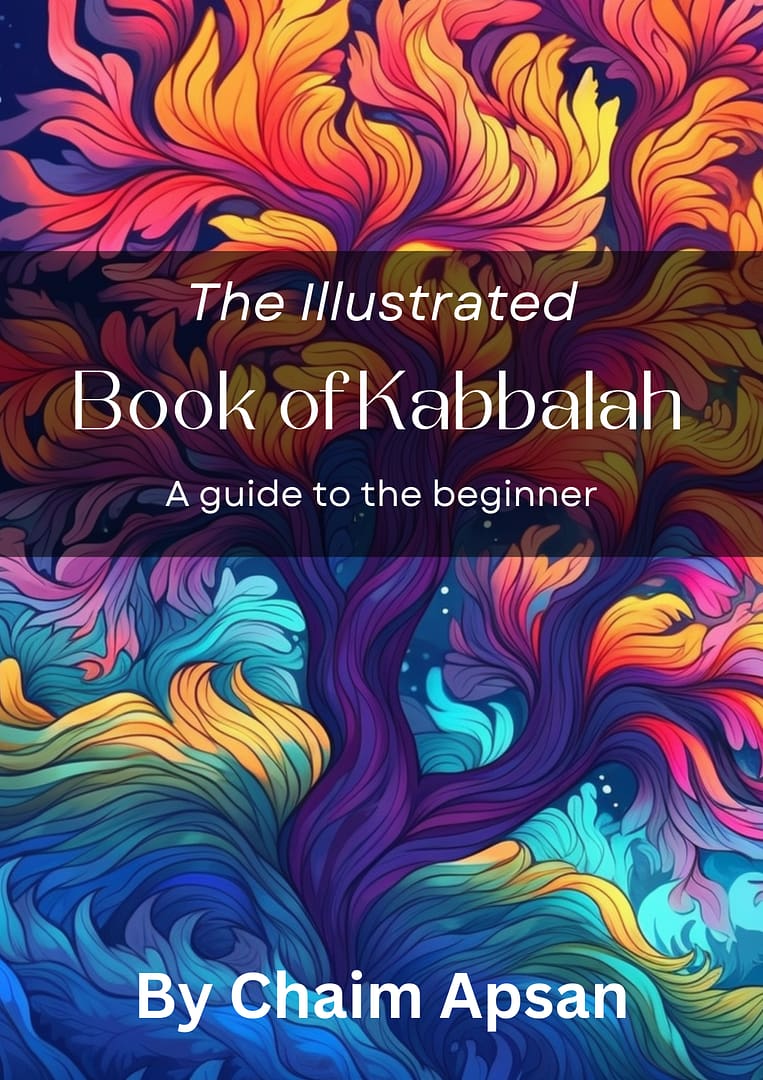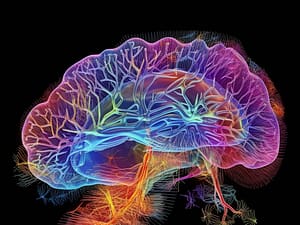There are 2 main forces we can readily feel in our lives: The first one is Chesed (lovingkindness) and the second one is Gevurah (strength). They both ensure the divine purpose of free will is maintained
Books on Kabbalah elaborate a lot on the 2 Sephirot of Chesed and Gevurah. This is because through them we perceive Hashem most clearly. When things go our way and everything is nice and sweet, we say that this is Hashem’s Sephirah of Chesed. When things are not so swell, what we perceive is a manifestation of the Sephirah of Gevurah.
This idea might sound trivial, but I can’t emphasize how critical it is for spiritual elevation and understanding how to remove spiritual blocks. In this post we will venture to give a foundational class on some of the most important concepts of Kabbalah, which are the breaking of the vessels and dinim.

The divine purpose in chaos
The Torah is very succinct in explaining what happened with the fall of Adam HaRishon. We know that Adam and Chava ate of the forbidden fruit of Knowledge of Good and Evil and as a result we are here repairing the damage done to the spiritual worlds behind our physical reality. Things get even more complicated when we learn from the Arizal that the root of their mistake was that they united before Shabbat, and according to the Zohar, it was not even a fruit that they ate.
Clearly what happened was predestined as nothing is outside Hashem’s will, but the Zohar also teaches in a few places that before the physical world was created, “He [Hashem] built worlds and destroyed them”. Rav Chaim Vital asks at the beginning of Etz Chaim what that purpose was. The answer is that in doing so, Hashem was able to purify the vessels needed to bring Creation to a point where it could be sustained. We could also ask “why then not just created the vessels ready for being used?”, but we don’t have an answer for that. Perhaps this is meant to teach that real Tikkun (rectification) only comes with brokenness and effort.
The vessels of the “eyes of Adam Kadmon” fell where the future worlds of Beriyah, Yetzirah and Assiyah would be, together with the sparks. The lights remained in Atzilut. When the Partzufim of Atzilut were created, that’s the time that is really called “Tikkun”. Afterward, the 3 lower spiritual worlds were created and our Avodat Hashem could actually start.
This is in very general (and simplified) terms what happened.
Chaos (Tohu) always comes before Tikkun. This ensures we have Avodat Hashem, our divine purpose in life. Through spiritual work of Torah, Mitzvot, Tefila, Gmilut Chassadim and Yichudim we are always bringing new rectifications on the specific Partzuf (spiritual system) we are working on. Even in Olam HaBah we will have Avodat Hashem, but it will be pure pleasure and a completely different existence than what we know.
Preconditions for free will and judgment
Hashem chooses to reward Tzadikim and punish Reshaim. This is a basic fact and part of the divine purpose of Creation. In order for this to happen, free will is a precondition for the game to work as it should. This means we always have a choice, no matter what happens. The right one will yield blessings and goodness, the wrong one will have the opposite effect.
Free will requires then that the scales of choice be balanced, otherwise, it wouldn’t work. The way this happens is by having something called “dinim” (or “judgments”).
Before that, let’s go back and try to understand a little how we perceive Hashem. Since everything is inside of Him, everything by necessity is a direct manifestation of Him, even though we don’t perceive it that way. We are subsumed in the Creator Himself though we can’t say we are “Him”. Be that as it may, everything is dictated by His Will, which is that the final Tikkun Olam should happen and all souls should be rectified, one way or another.

Now, in order for the game to be fair for everyone, choices must look more or less equally appealing. If everyone who choose “good” was immediately rewarded, it wouldn’t be any fun. Similarly, if every time someone did something bad a bolt struck his forehead, we would all be Tzadikim. So reward and punishment must be hidden, but not overly hidden so that it doesn’t discourage people from being good.
The breaking of the vessels is what gave Adam the possibility of sinning. This was the precursor event to the existence of evil in the world. Evil doesn’t have an existence of its own because Hashem can never be evil. Rather, evil derives its sustenance from Kedusha and from the “dinim” (judgments).
What are “dinim”?
Dinim can sound like a very nebulous concept but it’s actually very real tangible. Basically, they give measure to the light and all the limits of the physical world as we know. Just like it’s important for a fetus to have proper measurements and for a person’s kindness to have limits, so too, dinim give measurement and limits to Creation.
There are 2 types of Dinim, one male and one female:
- Par (פ״ר) which is the male aspect with a Gematria of 280. This is the Gematria of all ending letters (םןץףך – מנצפכ) put together.
- Shach (ש״ך) which is the female aspect with a Gematria of 320. This is also the Gematria of 5 times the word din which has a Gematria of 64 (5 x 64 = 320).
Now, it’s important to understand that dinim are not inherently bad. They are as much part of Creation as everything else and must not “be destroyed” or “avoided”, but rather “sweetened”.
One striking example we can readily understand is the Kavanah of the Maror on the Pesach Seder. The Arizal teaches in Shaar HaKavanot that Maror – מרור (Gematria 446) is the exact numerical value of death (מות). While he doesn’t explicitly mentions, its clear that this is a sort of sweetening the Dinim, since we’d much rather have the “death” of the Maror than real death. Similarly, we are supposed to dip it in Charosset, shake it off and then eat it, again symbolizing the sweetening of the dinim.
Yet, Dinim are what make things in life difficult. The “overcoming of challenges”, if done the right way, is essentially the sweetening of these dinim and making life better. It’s important to keep in mind that this is 100% part of the divine purpose of Creation, nothing is outside of it.
Sweetening the Dinim is not always straightforward. Sometimes it takes the death of a Tzadik to sweeten it all, depending on the general spiritual stance of the nation. When Paraoh told Moshe Rabbenu “I see evil in you [going out]” he was not just making an empty threat. His magicians had seen beyond the physical veil that a big bloodshed would happen in the desert. Moshe Rabbenu understood that and ordered the Jews to make the Korban Pesach and Brit Milah, two blood Mitzvot.
Why?
If it was Hashem’s will that bloodshed happens in the future (which was a result of the Golden Calf sin), Moshe Rabbenu reasoned he could minimize the punishment by effecting these two blood Mitzvot. This was an act of sweetening the judgments.
One doesn’t need to be Yosef HaTzadik to sweeten the dinim. Every time we make a Mitzvah or study Torah we are doing that besides bringing Mochin to the Partzufim. We all have the potential to bring blessings to Creation and that is also part of the divine purpose Hashem established as the foundation of the world. In doing so, life becomes much sweeter.

Other fascinating insights
While Dinim, which come from the Sephira of Gevurah, are not bad, in Etz Chaim we find that they “feed” the Sitra Achra. Evil would not have any sustenance were it not for the fact that dinim were not sweetened. This is what will happen when Mashiach comes: all dinim will be sweetened and evil will naturally disappear. These two events are intrinsically correlated.
This is a mindboggling idea that needs to be understood. It also sheds light on the famous Agadah of Menachot 41a in which Rav Ketina rounded the corners of his garment in order to exempt it from Tzitzit.
An angel came to him and inquired why he wasn’t wearing Tzitzit. He retorted “Do you exact punishment even for not performing a positive commandment in a passive way as well?”. His intention was that “Tzitzit are an ‘optional’ Mitzvah and only applies if we have ‘corners’ in our garments, not if we round them”. To which, the angel replied “Indeed, what you say is correct, but in time of wrath and day of reckoning, we punish even for abstaining from performing a positive mitzvah.”
This is shocking if you think about it. Halachically speaking, sure – you don’t “need” to have corners in your garment. It’s perfectly fine to walk without. But the dinim are not sweetened and, as the angel explained, in a time of “wrath and day of reckoning” (i.e. Dinim!), you are punished for failing to do that. It’s our duty to seek to be mechuyav (obligated) in the Mitzvot since they are for our own good, even if we have all “halachic” justification to abstain from them.
The Arizal explains that the “Red Heifer” / Parah Adumah (פרה אדומה) is a way of effecting a sweetening of the dinim on a general scale, not only on the person itself. The word פרה contains the פר dinim in the name and its source is in Malchut. As it receives the 5 Alefs from Binah which is Gematria Heh (each Alef is 1 thus 1×5 = 5) then that signifies the sweetening of the Par dinim. This is analogous to the Kavanah we perform in the first word of the Pasuk we do before the Amidah (אדני שפתי תפתח ופי יגיד תהלתך).
There’s a principle that whatever happens in the Klal (general system) also happens in the Prat (particular system).
Energy flows where intention goes and so everything we do has meaning in the spiritual worlds.
This is, after all, part of the divine purpose of the world: being a partner with Hashem.













